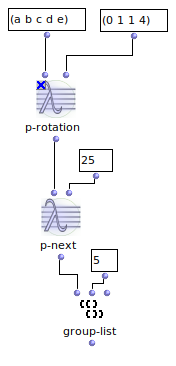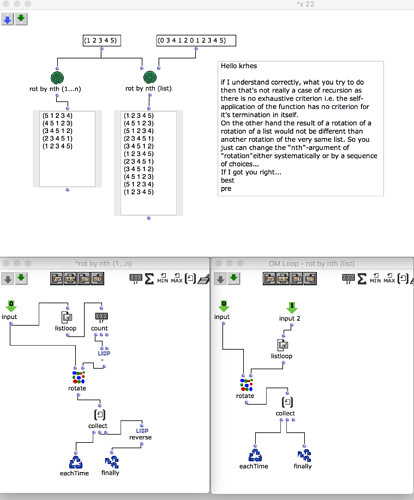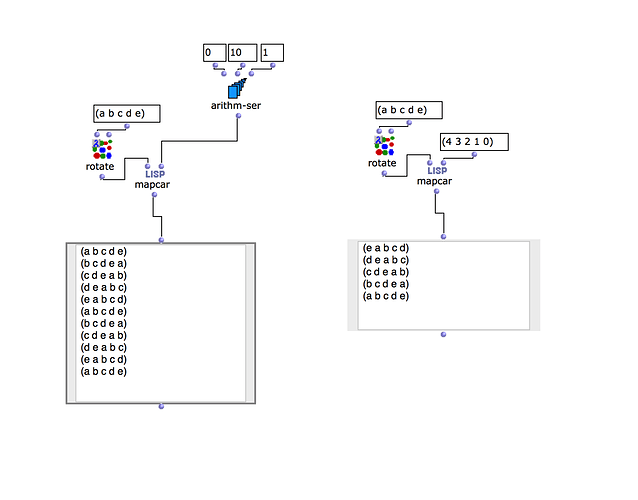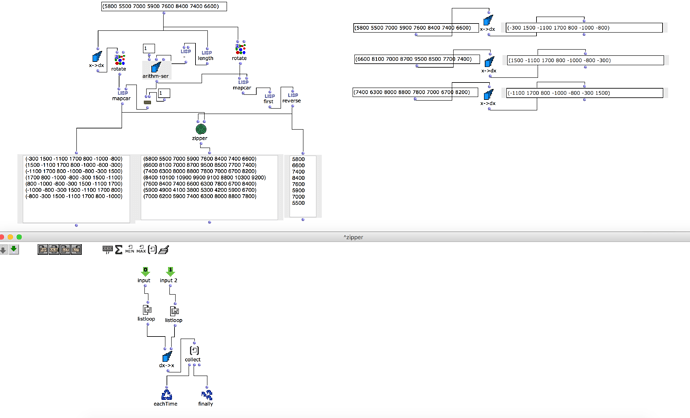Good evening All,
I’m having trouble formalizing, and therefore thinking of, a solution to the following:
I have a 5 pitch melodic contour (though it could be n pitches) with an (n) interval order, for example (in mc) 400 -600 1100 -300 that I’d like to apply in successive rotations, (rotation 1 would be -600 1100 -300 400, rotation 2 1100 -300 400 -600 etc) at a designated point point in the original five pitches. To be clear, for example choosing the final pitch of the set: 1 2 3 4 5, with interval structure above, then take last pitch (though it could be n pitch) and apply rotated interval structure then repeat until exhausted. Perhaps this is clearer:
a b c d e with original intervals, e then becomes the starting pitch and 1st rotation of intervals, new e then becomes first pitch again and the 2nd rotation of intervals is applied etc etc.
I am confident of understanding how to produce the interval structure in rotation but not applied recursively.
Would anyone have any hints on how to proceed? Mapcar or calling a function in lambda?
Thanks for any assistance,
krhes








